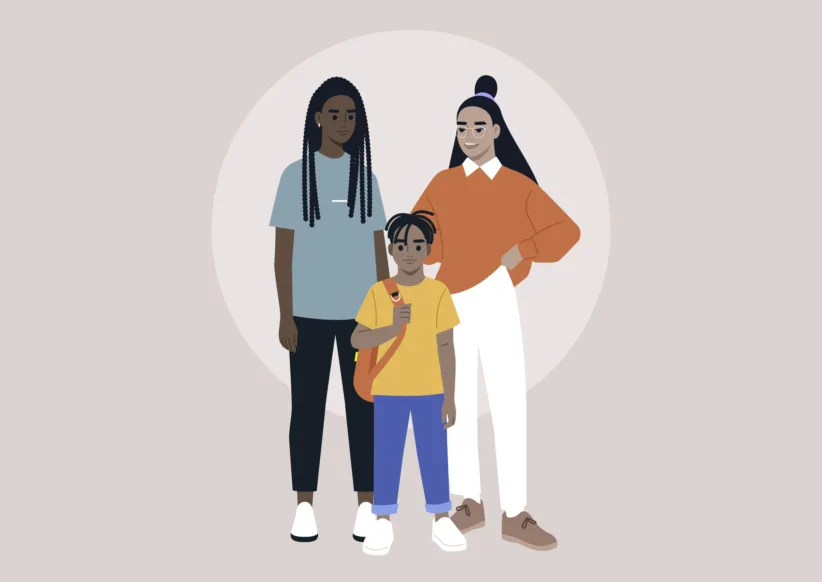February is part of the cold-and-flu season and it is a prime time to talk about one of the most commonly misunderstood conditions: tonsillitis.
“People do not necessarily call it tonsillitis; they call it a sore throat or strep throat and occasionally they mean tonsillitis,” says Dr. Joseph M. Bernstein, director of the division of pediatric otolaryngology at New York Eye and Ear Infirmary. Often, people are unsure as to what having tonsillitis really means. “Tonsillitis by definition is an inflammation or infection of the tonsils, which are immune organs or lymphatic organs in the back of one’s throat,” says Bernstein.
Different names get thrown around — such as tonsil infection or throat infection — but doctors understand what parents are referencing.
“In young kids the tonsils are a significant area in the back of the throat, so it is sometimes difficult to tell the difference between a localized tonsil infection versus a more diffuse, where everything in the back of the throat is inflamed, which would be a pharyngitis effectively,” says Bernstein.
In general, tonsillitis is not preventable.
“The causes are either a virus or a bacteria, and viral tonsillitis is more common than bacterial tonsillitis,” he says.
The signs of tonsillitis can mimic other conditions.
“The symptoms generally include some generalized malaise, sore throat, and often times a fever,” says Bernstein. Younger kids tend to be affected because they have a more immature immune system. “We see kids below the age of 10 more commonly and we see this more in the winter or cold months.” It tends to be associated with a child’s first couple of years of early exposure to a variety of respiratory illnesses.
Diagnosis is based on looking at the tonsils, as well as taking a history.
“We can make the clinical diagnosis simply with a combination of a complaint about a sore throat along with some objective signs of inflammation,” says Bernstein. If the doctor looks in the back of the throat and sees redness or swelling that means there is inflammation in the tonsils, but does not tell whether the tonsils are inflamed because of a virus or bacteria that may need to be treated with antibiotics. This is where throat cultures come in handy.
The prognosis is good.
“Generally speaking, tonsillitis — if not due to streptococcus infections — tends to be fairly self-limited and most kids tend to get better on their own,” says Bernstein. Conservative management is helpful. “Kids should be properly hydrated. Control fevers and pain with some Tylenol or Motrin, and they are self-resolving over the course of a couple of days,” says Bernstein.
With streptococcal infections, you have to be concerned about potential complications so doctors treat with antibiotics.
“There is some evidence to show that it hastens the clinical improvement and kids get better and it also decreases the complications,” says Bernstein.
In severe cases, tonsils are removed.
“Generally speaking, we wait until kids have significant symptoms and have had either seven infections within a year or five infections for a couple of years running, or three infections for three or more years running,” says Bernstein. It is the severe, more recurrent cases that tend to benefit from a tonsillectomy. “There are risks like bleeding after surgery which on average is in about two and a half percent of cases,” he says.
Doctors are cautious about recommending the procedure. The American Academy of Pediatrics suggested surgery for tonsil or adenoid swelling that makes normal breathing difficult; tonsils that are so swollen that your child has a problem swallowing; your child has repeated ear or sinus infections despite treatment; your child has an excessive number of severe sore throats each year; or your child’s lymph nodes beneath the lower jaw are swollen or tender for at least six months even with antibiotic treatment. If your child is a candidate for surgery, make sure he knows what to expect before, during, and after so it is less frightening to go through.
Now that you understand the basics of tonsillitis, you may wonder why we have tonsils in the first place.
“The tonsils function as an immunologic organ system and their function is to initiate an immune response against infectious, foreign bodies, entering the respiratory tract,” says Bernstein. The mode of entry through the mouth can be through inhalation or ingestion and the tonsils are the first defense against those antigens that potentially seek harm.
The take-home message is that if your child has a sore throat and fever without other symptoms suggestive of a common cold, he should see the pediatrician for a culture of his throat and to make sure it is not a strep infection that needs to be treated with antibiotics.
“It can last as short as 48 hours to occasionally as long as a week or 10 days,” says Bernstein. With supportive therapies, kids can do quite well.
Jamie Lober, author of Pink Power (www.getpinkpower.com), is dedicated to providing information on women’s and pediatric health topics. She can be reached at [email protected]. © 2013 Jamie Lober





















